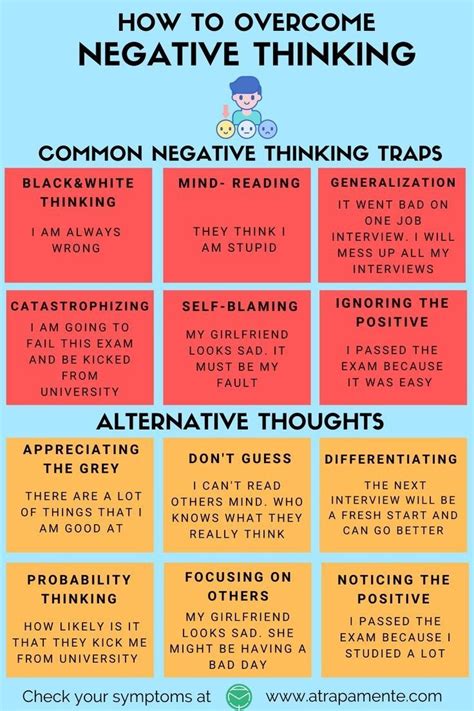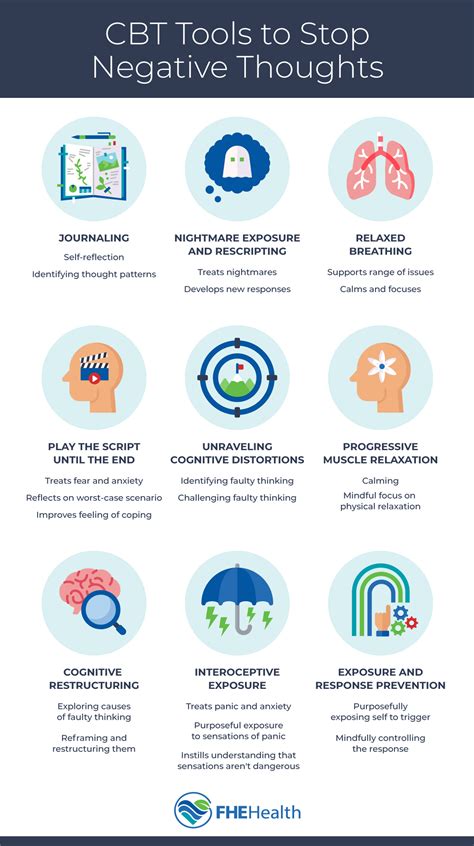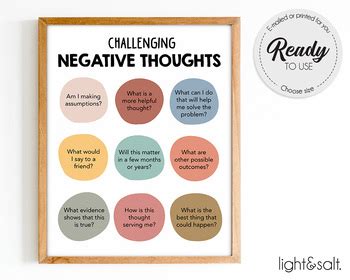Intro
Negative thinking can be a significant obstacle to achieving happiness, success, and overall well-being. It can lead to a range of negative emotions, including anxiety, depression, and low self-esteem. The good news is that it is possible to stop negative thinking and develop a more positive and constructive mindset. In this article, we will explore the importance of addressing negative thinking, its causes, and provide practical strategies for overcoming it.
Negative thinking can have a profound impact on our lives, affecting not only our mental health but also our relationships, work performance, and overall quality of life. When we engage in negative thinking, we can become trapped in a cycle of self-doubt, fear, and pessimism, making it challenging to break free and achieve our goals. Furthermore, negative thinking can also affect our physical health, leading to increased stress levels, a weakened immune system, and a range of other health problems.
The first step to stopping negative thinking is to become aware of our thoughts and emotions. This involves developing self-awareness, recognizing when we are engaging in negative thinking, and understanding the triggers that lead to these thoughts. By becoming more mindful of our thoughts and emotions, we can begin to identify patterns and develop strategies for challenging and changing negative thought patterns. This can be a challenging process, but with practice, patience, and persistence, it is possible to develop a more positive and constructive mindset.
Understanding Negative Thinking

Negative thinking can take many forms, including self-criticism, catastrophic thinking, and all-or-nothing thinking. Self-criticism involves criticizing ourselves for our perceived flaws and mistakes, while catastrophic thinking involves expecting the worst-case scenario in any given situation. All-or-nothing thinking involves viewing situations as either completely positive or completely negative, with no middle ground. These types of negative thinking can be damaging and limiting, preventing us from achieving our full potential and living a fulfilling life.
Causes of Negative Thinking
Negative thinking can be caused by a range of factors, including past experiences, upbringing, and social and cultural influences. For example, individuals who have experienced trauma or abuse may be more prone to negative thinking, as may those who have been raised in an environment that emphasizes criticism and perfectionism. Social and cultural influences, such as the media and social media, can also contribute to negative thinking, perpetuating unrealistic expectations and promoting consumerism and materialism.Strategies for Stopping Negative Thinking

Fortunately, there are many strategies that can help us stop negative thinking and develop a more positive and constructive mindset. These include:
- Practicing mindfulness and meditation to increase self-awareness and calm the mind
- Challenging negative thoughts by reframing them in a more positive and realistic light
- Engaging in physical activity to release endorphins and improve mood
- Connecting with others and building strong social support networks
- Practicing gratitude and focusing on the positive aspects of life
- Setting realistic goals and celebrating achievements
By incorporating these strategies into our daily lives, we can begin to break free from negative thinking and develop a more positive and constructive mindset. This can have a profound impact on our overall well-being, leading to increased happiness, success, and fulfillment.
Practicing Mindfulness and Meditation
Mindfulness and meditation are powerful tools for stopping negative thinking. By practicing mindfulness, we can become more aware of our thoughts and emotions, recognizing when we are engaging in negative thinking and taking steps to challenge and change these thoughts. Meditation can also help to calm the mind, reducing stress and anxiety and promoting a sense of calm and well-being.Challenging Negative Thoughts

Challenging negative thoughts involves recognizing when we are engaging in negative thinking and taking steps to reframe these thoughts in a more positive and realistic light. This can involve asking ourselves questions, such as "Is this thought really true?" or "Is there another way of looking at this situation?" By challenging negative thoughts, we can begin to break free from negative thinking and develop a more positive and constructive mindset.
Some common techniques for challenging negative thoughts include:
- Cognitive-behavioral therapy (CBT), which involves identifying and challenging negative thought patterns
- Reality testing, which involves testing the reality of our thoughts and assumptions
- Reframing, which involves reframing negative thoughts in a more positive and realistic light
- Journaling, which involves writing down our thoughts and emotions to gain insight and perspective
By using these techniques, we can begin to challenge negative thoughts and develop a more positive and constructive mindset.
Building Resilience
Building resilience is critical for stopping negative thinking and developing a more positive and constructive mindset. Resilience involves the ability to bounce back from adversity, trauma, and stress, and can be developed through practice and training. Some common strategies for building resilience include:- Practicing self-care and self-compassion
- Building strong social support networks
- Engaging in physical activity and exercise
- Practicing mindfulness and meditation
- Setting realistic goals and celebrating achievements
By building resilience, we can better cope with stress and adversity, reducing the likelihood of negative thinking and promoting overall well-being.
Seeking Support

Seeking support is critical for stopping negative thinking and developing a more positive and constructive mindset. This can involve seeking support from friends, family, or a mental health professional, such as a therapist or counselor. Some common types of support include:
- Individual therapy, which involves working one-on-one with a therapist or counselor
- Group therapy, which involves working with a group of individuals who share similar experiences and challenges
- Support groups, which involve connecting with others who share similar experiences and challenges
- Online support, which involves connecting with others through online forums, social media, and other online platforms
By seeking support, we can gain insight, perspective, and guidance, helping us to stop negative thinking and develop a more positive and constructive mindset.
Maintaining Progress
Maintaining progress is critical for stopping negative thinking and developing a more positive and constructive mindset. This involves continuing to practice the strategies and techniques that have helped us to stop negative thinking, such as mindfulness, meditation, and challenging negative thoughts. Some common strategies for maintaining progress include:- Setting realistic goals and celebrating achievements
- Practicing self-care and self-compassion
- Building strong social support networks
- Engaging in physical activity and exercise
- Practicing mindfulness and meditation
By maintaining progress, we can continue to stop negative thinking and develop a more positive and constructive mindset, leading to increased happiness, success, and fulfillment.
Conclusion and Next Steps

In conclusion, stopping negative thinking is a process that requires effort, patience, and persistence. By becoming more aware of our thoughts and emotions, challenging negative thoughts, building resilience, seeking support, and maintaining progress, we can develop a more positive and constructive mindset. This can have a profound impact on our overall well-being, leading to increased happiness, success, and fulfillment.
We invite you to take the next step in stopping negative thinking and developing a more positive and constructive mindset. Share this article with others, and take a moment to reflect on your own thoughts and emotions. What strategies and techniques will you use to stop negative thinking and develop a more positive and constructive mindset? Let us know in the comments below.
What is negative thinking?
+Negative thinking involves a pattern of thoughts that are negative, critical, and limiting. It can involve self-criticism, catastrophic thinking, and all-or-nothing thinking, and can have a profound impact on our mental and physical health.
How can I stop negative thinking?
+Stopping negative thinking involves becoming more aware of our thoughts and emotions, challenging negative thoughts, building resilience, seeking support, and maintaining progress. This can involve practicing mindfulness and meditation, challenging negative thoughts, and building strong social support networks.
What are the benefits of stopping negative thinking?
+The benefits of stopping negative thinking include increased happiness, success, and fulfillment, as well as improved mental and physical health. By stopping negative thinking, we can develop a more positive and constructive mindset, leading to increased resilience, better relationships, and a greater sense of overall well-being.
